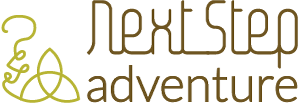I love service learning. It’s fun to help kids help people, in preschools, retirement communities, parks and gardens. Service learning is a respected way to get kids involved in their own educations.
But it’s not just about doing projects that help communities. For service learning to be valuable to young people as well as to the people they work with, we have to involve them in every step of every project–investigation, planning, action, reflection, demonstration and celebration.
After Global Youth Service Day last spring, Jessica Krough, Melissa Simmermaker of the Iowa Commission on Volunteer Service, and I talked about innovative ways to reflect on the state-wide day of service. We decided to experiment with Internet based radio to bring kids together from different GYSD projects around the state. About eight kids joined me on my show, “We’re Entrepreneurs–we can help.” Three of my Earth Heroes, and two students from the Hoover High School STARS program came to the studio. Two students from Lamoni Middle School and their facilitator joined us by Skype.
The Earth Heroes talked about the ongoing project they’re doing for Global Youth Service Day. Jessica visited the garden, and helped them read the Governor’s Proclamation. They were still clearing the garden, building their dragon, and planting vegetables.
As Kyla, Terrance, I work with the Earth Heroes at the Des Moines Botanical Center, we talk about
- What happened?
- So what?–How did you feel? What did you learn?
- Now what?–What’s next? How can you use this experience in the future?
Here is some of their wisdom–
- “When I’m special, I work really hard.”
- “I didn’t know broccoli grew on a plant.”
- “Digging is fun!”
The Earth Heroes walk down the hill from Boys and Girls Club at Carver Community School to the Botanical Center, and we form a circle. The kids know the FIRST thing we do is the “Name Wave.” The kids lead the Wave, starting with everyone yelling out their name as loud as they can. Then come “compliments and appreciations,” a chance for everyone to say thank you, and talk about what we like.
It’s September, and the 2nd through 5th graders are harvesting squash, pumpkins, watermelon, beans, tomatoes, okra, onions, potatoes, peppers and sunflower seeds to take home. Any gardener knows fall is time to reflect on what worked and what didn’t, what got done, and what didn’t. What was lost? Where did the summer go?
So, they’re taking photos in the gardens, and next week we’ll create a map of each of the 20 ten-foot X 10-foot raised beds, making notes about what grew, crops that worked well together, and what the Heroes learned from experiments with okra, mulching, and fall planting.
Service learning is a powerful way for young people to find relevance in education, dream about the future, and change the world.













